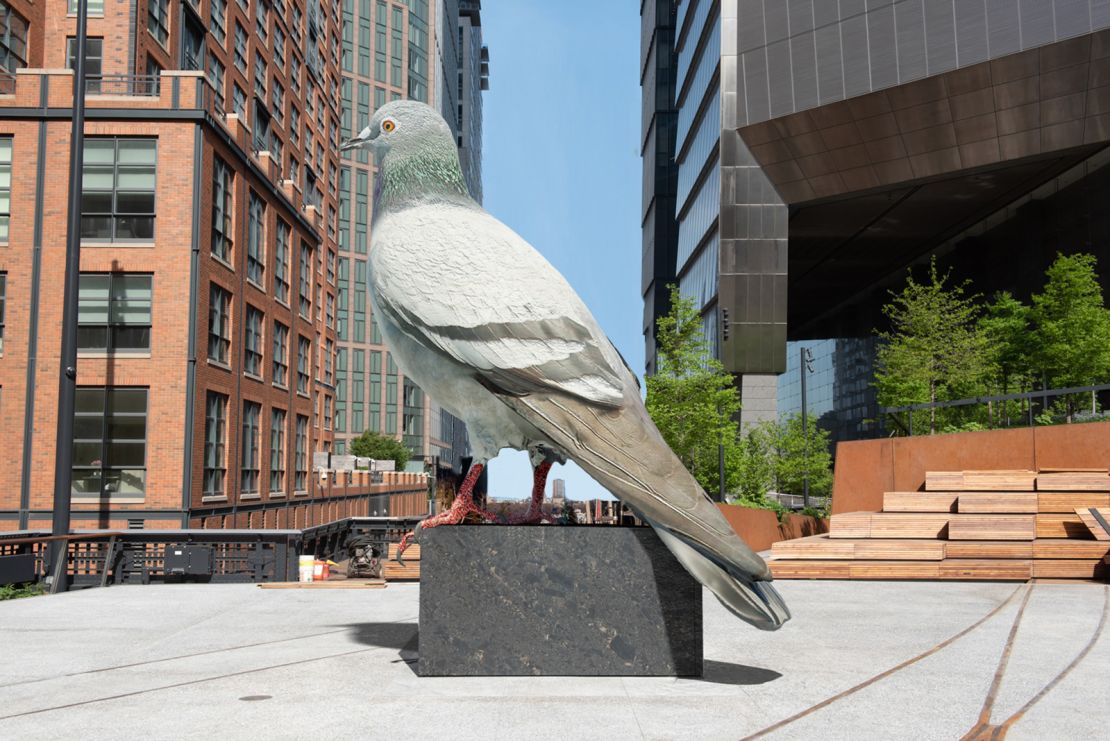Editor’s Note: This article was originally published by?The Art Newspaper, an editorial partner of CNN Style.
New Yorkers may not all agree on which urban critter is the more fitting symbol for their city — the resilient rat, the nuke-proof cockroach or the scrappy pigeon — but the latter may soon have an edge in the form of a 16ft-tall monument perched atop the?High Line?elevated park on the city’s west side. The next commission to alight above Tenth Avenue on the park’s prominent?plinth?will be?Dinosaur?(2024), a hyper-realist aluminum sculpture of a pigeon by Iván Argote, the Bogotá-born, Paris-based artist.
“The name Dinosaur makes reference to the sculpture’s scale and to the pigeon’s ancestors who millions of years ago dominated the globe, as we humans do today,” Argote said in a statement. “The name also serves as reference to the dinosaur’s extinction. Like them, one day we won’t be around anymore, but perhaps a remnant of humanity will live on — as pigeons do — in the dark corners and gaps of future worlds. I feel this sculpture could generate an uncanny feeling of attraction, seduction and fear among the inhabitants of New York.”

Like many New Yorkers, pigeons are not native to the region. They are believed to have been brought to the city in the 17th century by European settlers. And, like generations of MBA graduates who moved to the city for jobs on Wall Street, pigeons are thriving in their adopted surroundings and now throng the sidewalks in their shiny suits. The city’s pigeon population is?estimated?to be larger than its human population, with around nine million birds compared to the nearly eight million people living in the city.
“Iván has a charming ability as an artist to take something familiar and make us consider it anew in profound ways,” Cecilia Alemani, the director and chief curator of High Line Art, said in a statement. “His sculpture for the High Line Plinth adds a critical yet funny perspective to the ongoing dialogue of public art.”
Critiques of conventional monuments and public art — and a fondness for pigeons — recur throughout Argote’s work, which has included?documenting?the removal of a statue of French colonial administrator Joseph Gallieni from a public plaza in Paris to planters made to?resemble?historical monuments. When he was nominated for France’s top contemporary art prize, the Prix Marcel Duchamp, in 2022,?Argote’s installation?at the Centre Pompidou featured videos of monuments being removed and disassembled, projected in a gallery strewn with seemingly toppled obelisks.

Argote’s prominent pigeon will be the fourth High Line Plinth commission, following works by?Pamela Rosenkranz,?Simone Leigh?and?Sam Durant. Rosenkranz’s sculpture of a neon-pink tree,?Old Tree?(2023), will remain on view until September. Argote’s?Dinosaur?will be unveiled the following month and remain on view for 18 months.
Read more stories from The Art Newspaper?here.

